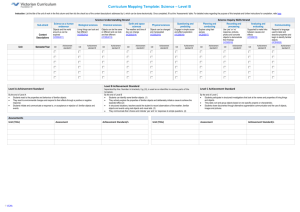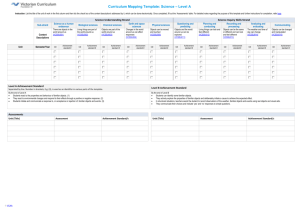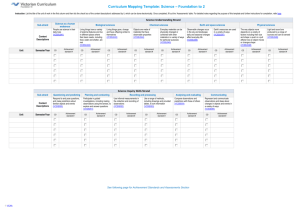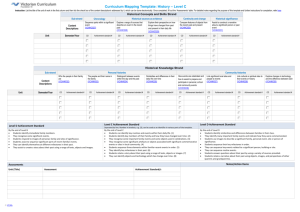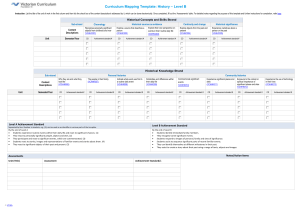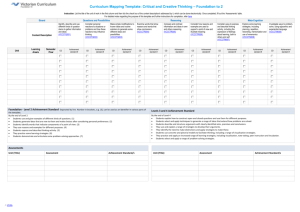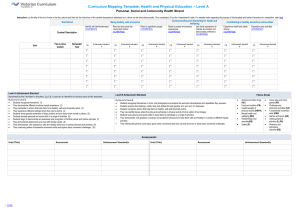Curriculum Mapping Template: Science * Level C
advertisement
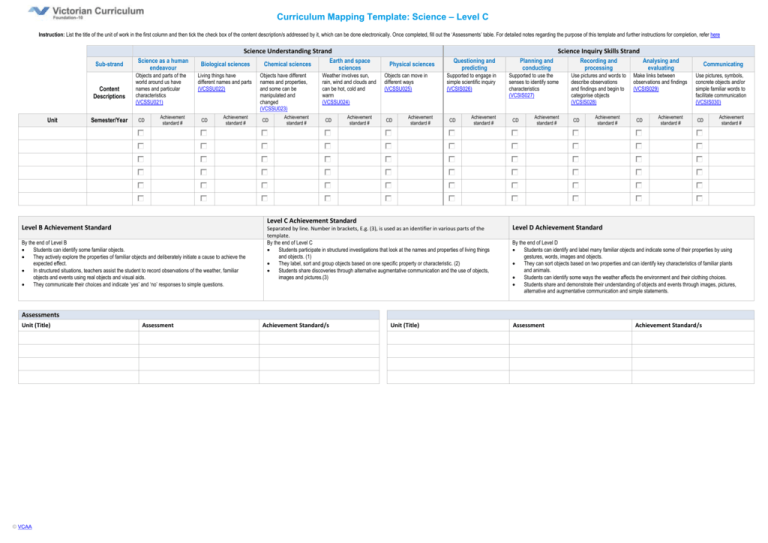
Curriculum Mapping Template: Science – Level C Instruction: List the title of the unit of work in the first column and then tick the check box of the content description/s addressed by it, which can be done electronically. Once completed, fill out the ‘Assessments’ table. For detailed notes regarding the purpose of this template and further instructions for completion, refer here Science Understanding Strand Sub-strand Content Descriptions Unit Semester/Year Science as a human endeavour Objects and parts of the world around us have names and particular characteristics (VCSSU021) Achievement standard # CD Biological sciences Living things have different names and parts (VCSSU022) Achievement standard # CD Earth and space sciences Chemical sciences Objects have different names and properties, and some can be manipulated and changed (VCSSU023) Achievement standard # CD Science Inquiry Skills Strand Weather involves sun, rain, wind and clouds and can be hot, cold and warm (VCSSU024) Achievement standard # CD Physical sciences Objects can move in different ways (VCSSU025) Achievement standard # CD Questioning and predicting Supported to engage in simple scientific inquiry (VCSIS026) Achievement standard # CD Planning and conducting Supported to use the senses to identify some characteristics (VCSIS027) Achievement standard # CD Recording and processing Analysing and evaluating Use pictures and words to describe observations and findings and begin to categorise objects (VCSIS028) Make links between observations and findings (VCSIS029) Achievement standard # CD Achievement standard # CD Level C Achievement Standard By the end of Level B Students can identify some familiar objects. They actively explore the properties of familiar objects and deliberately initiate a cause to achieve the expected effect. In structured situations, teachers assist the student to record observations of the weather, familiar objects and events using real objects and visual aids. They communicate their choices and indicate ‘yes’ and ‘no’ responses to simple questions. Separated by line. Number in brackets, E.g. (3), is used as an identifier in various parts of the template. By the end of Level C Students participate in structured investigations that look at the names and properties of living things and objects. (1) They label, sort and group objects based on one specific property or characteristic. (2) Students share discoveries through alternative augmentative communication and the use of objects, images and pictures.(3) Use pictures, symbols, concrete objects and/or simple familiar words to facilitate communication (VCSIS030) © VCAA Assessment Achievement Standard/s Unit (Title) Level D Achievement Standard By the end of Level D Students can identify and label many familiar objects and indicate some of their properties by using gestures, words, images and objects. They can sort objects based on two properties and can identify key characteristics of familiar plants and animals. Students can identify some ways the weather affects the environment and their clothing choices. Students share and demonstrate their understanding of objects and events through images, pictures, alternative and augmentative communication and simple statements. Assessments Unit (Title) Achievement standard # CD Level B Achievement Standard Communicating Assessment Achievement Standard/s
